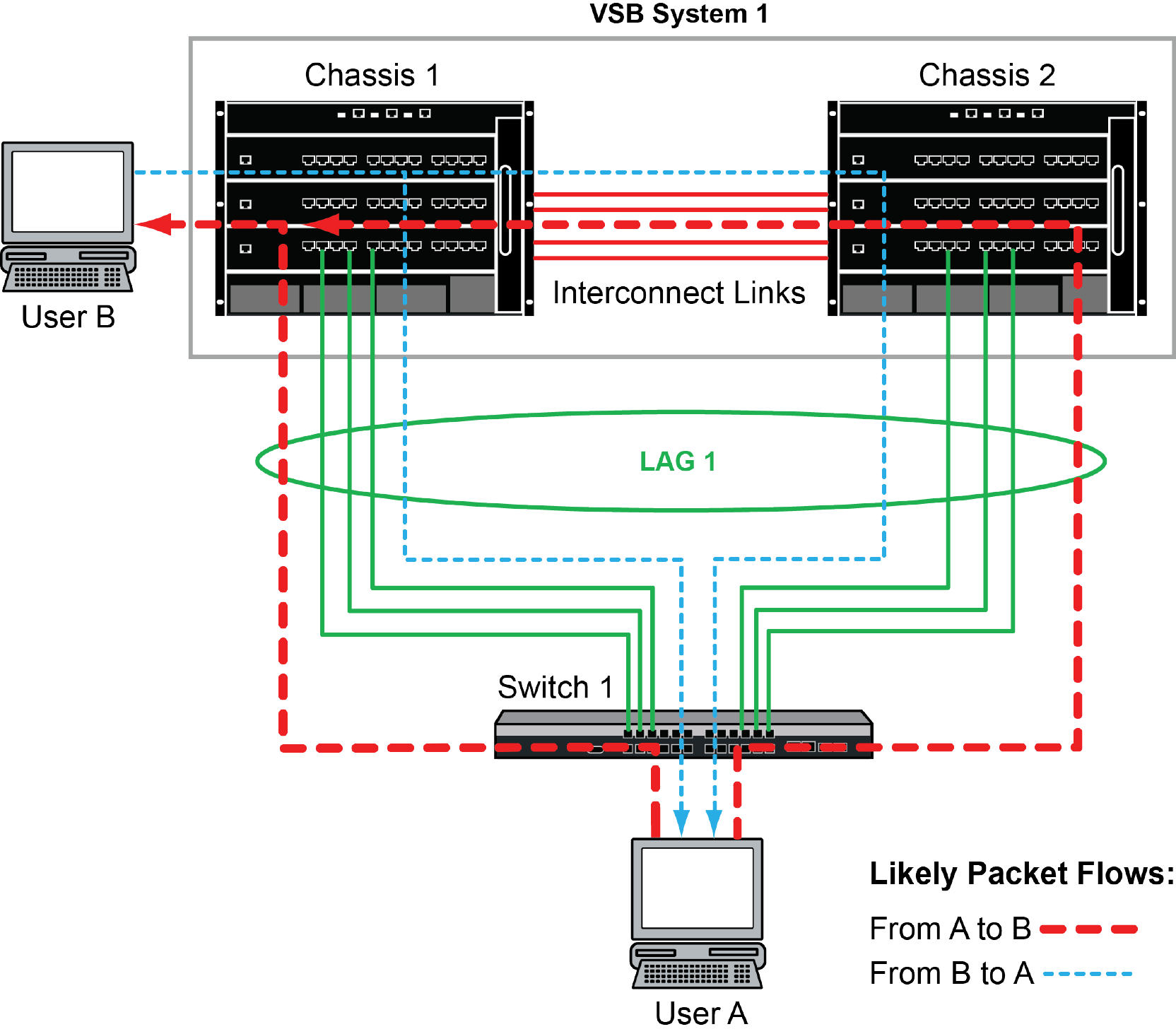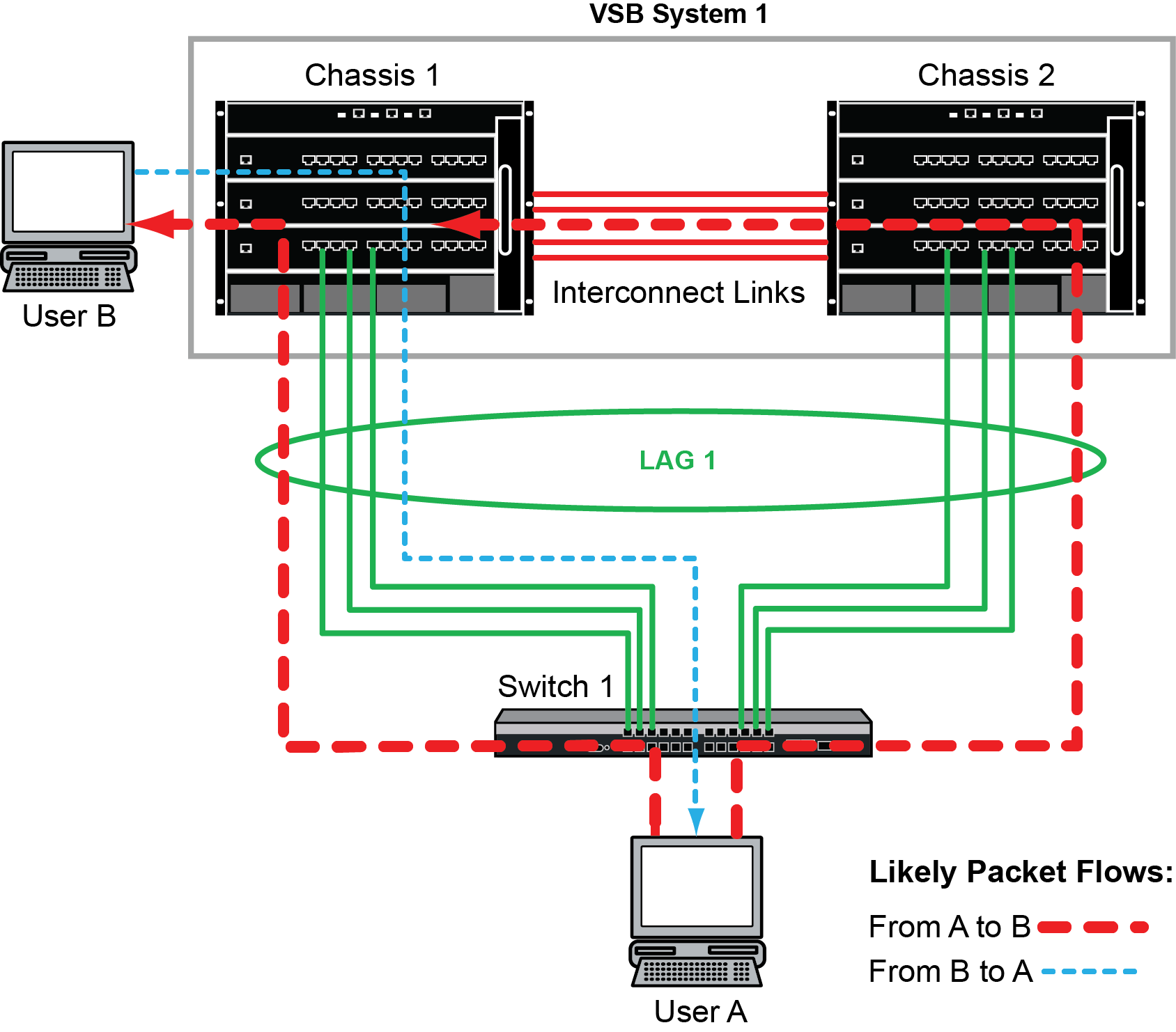LACP Outport local preference is a VSB only feature that increases the likelihood that the packet flow will egress the system using a LAG port on the local chassis and not utilize the VSB interconnect link. When ports for the same LAG are configured on both VSB system chassis, the hash that determines the egress port does not take into consideration interconnect link utilization when choosing the egress port. This inability to determine interconnect link utilization can cause unnecessary use of the interconnect link and in the worse case scenario can lead to interconnect link saturation. The outport local preference for a chassis can be configured. Local chassis outport local preference determines the likelihood that a packet will egress the VSB system using a LAG port on the local chassis. To the degree an ingressing packet egresses the local chassis, packet utilization of the VSB interconnect links is minimized.
There are four outport local preference levels. If set to none, the outport local preference feature has no impact on packet egress for the VSB system. The weak, strong, and all-local outport local preference settings provide an increasing likelihood that the packet will egress the VSB system using a LAG port on the local chassis if resources are available. The degree of likelihood is from a somewhat greater likelihood in the case of weak, to an attempt to force all packets to use a local chassis LAG port in the case of all-local.
Outport Local Preference Set to None and Outport Local Preference Set to All-Local present a likely packet flow example between two users within an LACP outport local preference configuration context. User A is directly attached to switch 1. User B is directly attached to chassis 1 of VSB system 1. Both chassis 1, chassis 2, and switch 1 have ports configured with LAG 1.
Outport Local Preference Set to None presents likely packet flows between User A and User B if LACP outport local preference is set to none. Because Switch 1 has access to both chassis 1 and chassis 2 on LAG 1, Packet flows from User A to User B may use LAG 1 ports on either VSB chassis 1 or 2. It is not possible to prevent packet flows in this direction from utilizing VSB system 1 interconnect links. Because the outport local preference is set to none on VSB system 1, the same is true for any flows from User B to User A.

Outport Local Preference Set to All-Local presents likely packet flows between User A and User B if LACP outport local preference is set to all-local. Once again, because Switch 1 has access to both chassis 1 and chassis 2 on LAG 1, Packet flows from User A to User B may use LAG 1 ports on either VSB chassis 1 or 2. Because the outport local preference is set to all-local on VSB system 1 and User B is directly connected to chassis 1, chassis 1 will always be the local chassis. The all-local preference setting will always attempt to force packet flows to use chassis 1 LAG 1 ports for User B to User A packet flows.


Note
Local chassis outport local preference is a VSB only feature. The outport local preference setting is only in affect when when VSB is globally enabled on the system.LACP outport local preference can be configured at any time. If configured before globally enabling VSB, you must configure it on both chassis with the same option. If you configure it after VSB is globally enabled, it is configured globally for the VSB system.
Use the set lacp outportLocalPreference command to configure outport local preference for the VSB system.
Use the clear lacp outportLocalPreference command to reset outport local preference to the default value of none for the VSB system.

 Print
this page
Print
this page Email this topic
Email this topic Feedback
Feedback